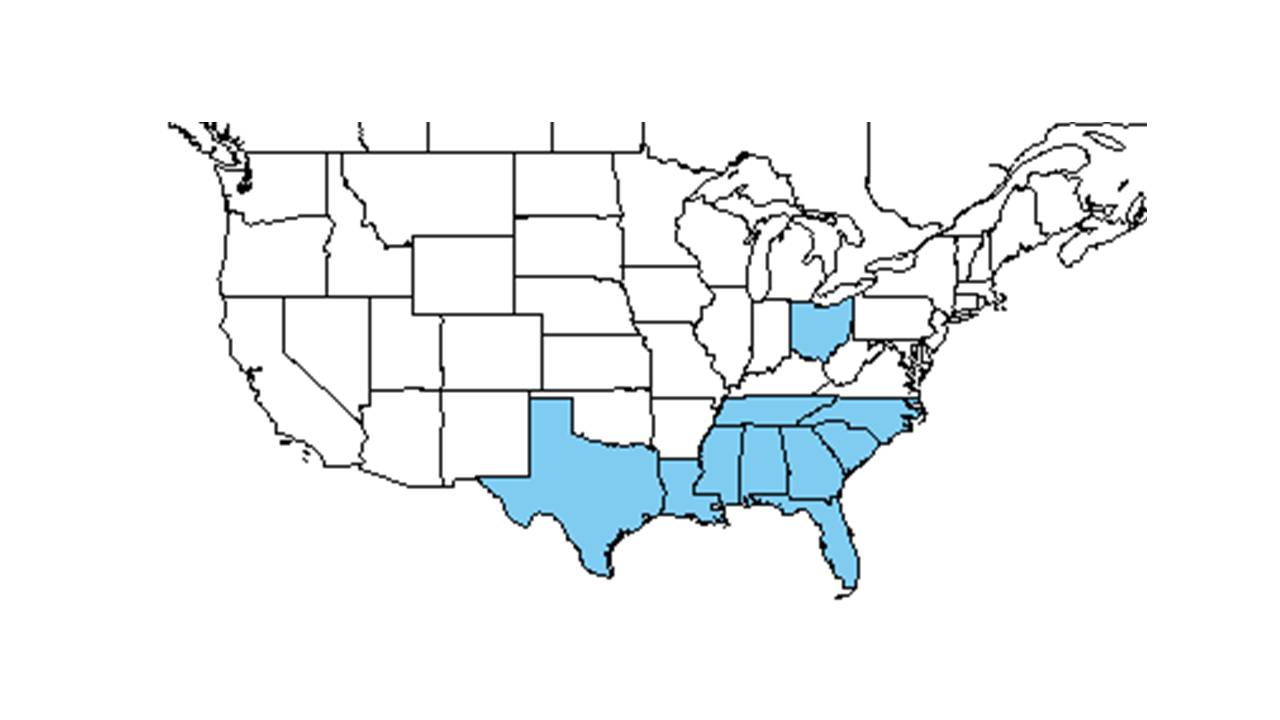Difference between revisions of "Physalis arenicola"
(Created page with "{{italic title}} <!-- Get the taxonomy information from the NRCS Plants database --> {{taxobox | name = Physalis arenicola | image = Insert.jpg | image_caption = | regnum = P...") |
HaleighJoM (talk | contribs) (→Ecology) |
||
| (14 intermediate revisions by 5 users not shown) | |||
| Line 3: | Line 3: | ||
{{taxobox | {{taxobox | ||
| name = Physalis arenicola | | name = Physalis arenicola | ||
| − | | image = | + | | image = Phys_aren.jpg |
| − | | image_caption = | + | | image_caption = Photo by Patricia Howell, [http://www.florida.plantatlas.usf.edu/Default.aspx Atlas of Florida Vascular Plants] |
| regnum = Plantae | | regnum = Plantae | ||
| divisio = Magnoliophyta - Flowering plants | | divisio = Magnoliophyta - Flowering plants | ||
| Line 17: | Line 17: | ||
| range_map_caption = Natural range of ''Physalis arenicola'' from USDA NRCS [http://www.plants.usda.gov Plants Database]. | | range_map_caption = Natural range of ''Physalis arenicola'' from USDA NRCS [http://www.plants.usda.gov Plants Database]. | ||
}} | }} | ||
| + | |||
| + | Common names: Cypresshead groundcherry; Sandhill groundcherry<ref name="weakley">Weakley, A.S. 2015. Flora of the southern and mid-atlantic states. Working Draft of 21 May 2015. University of North Carolina at Chapel Hill, Chapel Hill, North Carolina.</ref> | ||
| + | |||
| + | ==Taxonomic notes== | ||
| + | Synonyms: none.<ref name="weakley">Weakley, A.S. 2015. Flora of the southern and mid-atlantic states. Working Draft of 21 May 2015. University of North Carolina at Chapel Hill, Chapel Hill, North Carolina.</ref> | ||
| + | |||
| + | Varieties: none.<ref name="weakley">Weakley, A.S. 2015. Flora of the southern and mid-atlantic states. Working Draft of 21 May 2015. University of North Carolina at Chapel Hill, Chapel Hill, North Carolina.</ref> | ||
| + | |||
==Description== | ==Description== | ||
<!-- Basic life history facts such as annual/perrenial, monoecious/dioecious, root morphology, seed type, etc. --> | <!-- Basic life history facts such as annual/perrenial, monoecious/dioecious, root morphology, seed type, etc. --> | ||
| + | |||
==Distribution== | ==Distribution== | ||
| + | ''P. arenicola'' extends from Georgia, Alabama, and southern Mississippi, then south to Florida.<ref name="weakley">Weakley, A.S. 2015. Flora of the southern and mid-atlantic states. Working Draft of 21 May 2015. University of North Carolina at Chapel Hill, Chapel Hill, North Carolina.</ref> | ||
==Ecology== | ==Ecology== | ||
| − | ===Habitat=== <!--Natural communities, human disturbed habitats, topography, hydrology, soils, light, fire regime requirements for removal of competition, etc.--> | + | <!--===Habitat===--> <!--Natural communities, human disturbed habitats, topography, hydrology, soils, light, fire regime requirements for removal of competition, etc.--> |
===Phenology=== <!--Timing off flowering, fruiting, seed dispersal, and environmental triggers. Cite PanFlora website if appropriate: http://www.gilnelson.com/PanFlora/ --> | ===Phenology=== <!--Timing off flowering, fruiting, seed dispersal, and environmental triggers. Cite PanFlora website if appropriate: http://www.gilnelson.com/PanFlora/ --> | ||
| − | ===Seed dispersal=== | + | It flowers from April to August and in October with peak inflorescence in June.<ref>Nelson, G. [http://www.gilnelson.com/ PanFlora]: Plant data for the eastern United States with emphasis on the Southeastern Coastal Plains, Florida, and the Florida Panhandle. www.gilnelson.com/PanFlora/ Accessed: 12 DEC 2016</ref> |
| − | ===Seed bank and germination=== | + | <!--===Seed dispersal===--> |
| − | ===Fire ecology=== <!--Fire tolerance, fire dependence, adaptive fire responses--> | + | <!--===Seed bank and germination===--> |
| − | ===Pollination=== | + | <!--===Fire ecology===--> <!--Fire tolerance, fire dependence, adaptive fire responses--> |
| − | === | + | <!--===Pollination===--> |
| − | ===Diseases and parasites=== | + | <!--===Herbivory and toxicology===--> <!--Common herbivores, granivory, insect hosting, poisonous chemicals, allelopathy, etc--> |
| − | ==Conservation and | + | <!--===Diseases and parasites===--> |
| − | == | + | |
| + | ==Conservation, cultivation, and restoration== | ||
| + | |||
| + | ==Cultural use== | ||
| + | The fruit can be used a substitute for tomatoes.<ref> Fernald, et al. 1958. Edible Plants of Eastern North America. Harper and Row Publishers, New York.</ref> | ||
| + | |||
| + | ==Photo Gallery== | ||
==References and notes== | ==References and notes== | ||
| − | |||
Latest revision as of 12:36, 15 July 2022
| Physalis arenicola | |
|---|---|

| |
| Photo by Patricia Howell, Atlas of Florida Vascular Plants | |
| Scientific classification | |
| Kingdom: | Plantae |
| Division: | Magnoliophyta - Flowering plants |
| Class: | Magnoliopsida – Dicotyledons |
| Order: | Solanales |
| Family: | Solanaceae |
| Genus: | Physalis |
| Species: | P. arenicola |
| Binomial name | |
| Physalis arenicola Kearney | |

| |
| Natural range of Physalis arenicola from USDA NRCS Plants Database. | |
Common names: Cypresshead groundcherry; Sandhill groundcherry[1]
Contents
Taxonomic notes
Synonyms: none.[1]
Varieties: none.[1]
Description
Distribution
P. arenicola extends from Georgia, Alabama, and southern Mississippi, then south to Florida.[1]
Ecology
Phenology
It flowers from April to August and in October with peak inflorescence in June.[2]
Conservation, cultivation, and restoration
Cultural use
The fruit can be used a substitute for tomatoes.[3]
Photo Gallery
References and notes
- ↑ 1.0 1.1 1.2 1.3 Weakley, A.S. 2015. Flora of the southern and mid-atlantic states. Working Draft of 21 May 2015. University of North Carolina at Chapel Hill, Chapel Hill, North Carolina.
- ↑ Nelson, G. PanFlora: Plant data for the eastern United States with emphasis on the Southeastern Coastal Plains, Florida, and the Florida Panhandle. www.gilnelson.com/PanFlora/ Accessed: 12 DEC 2016
- ↑ Fernald, et al. 1958. Edible Plants of Eastern North America. Harper and Row Publishers, New York.